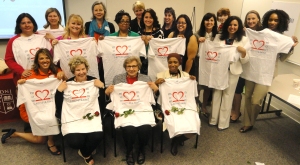 NEW BRUNSWICK, N.J. – The new Rutgers University – academically stronger, energized by an expanded mission of medical education – begins today.
NEW BRUNSWICK, N.J. – The new Rutgers University – academically stronger, energized by an expanded mission of medical education – begins today.
Rutgers University President Robert L. Barchi and leaders across the state welcomed a new era in higher education, as the New Jersey Medical and Health Sciences Education Restructuring Act incorporates most of the former University of Medicine and Dentistry of New Jersey into Rutgers.
The restructuring act, which takes full effect today, positions Rutgers to assume greater prominence across the state and nation.
“For decades, Rutgers has been recognized for outstanding faculty, students and programs in the arts, sciences, humanities, social sciences and professional schools,” President Barchi said. “Combining our many existing strengths with our broader mission of medical education will elevate Rutgers to the ranks of the nation’s finest comprehensive research universities.”
The new Rutgers will:
Offer undergraduate, graduate and professional school students a more complete education, with access to interdisciplinary programs not previously available.
Strengthen public-private partnerships between Rutgers and the health-care industry statewide, nationally and globally.
Create new economic opportunities for New Jersey businesses and residents.
Launch new research initiatives to tackle many of society’s most difficult challenges.
In recent months, President Barchi noted, Rutgers faculty and students have begun to form interdisciplinary initiatives in key areas of research, instruction and public service – including neuroscience, medical ethics, public health and precision medicine.
“The people of New Jersey finally have the world-class public university that they deserve, with a commitment to excellence in virtually every facet of higher education,” President Barchi said. “We look forward to the day when Rutgers University is synonymous with research that eradicates disease and enhances medical care, while providing an excellent education each year to tens of thousands of students from all corners of the world.
“I’d like to thank Gov. Chris Christie, Senate President Stephen M. Sweeney, Assembly Speaker Sheila Y. Oliver, members of our governing boards and all of the leaders across New Jersey who have made the restructuring of higher education a reality,” President Barchi added.
The restructuring act creates Rutgers Biomedical and Health Sciences, which includes all of the schools, centers and institutes that made up UMDNJ except for University Hospital in Newark and the School of Osteopathic Medicine in Stratford. University Hospital is now a freestanding institution, but remains the principal teaching hospital for the Newark-based medical and dental schools. The School of Osteopathic Medicine is now part of Rowan University. In addition, Graduate School of Biomedical Sciences programs at Stratford transfer to Rowan University.
Rutgers Biomedical and Health Sciences also includes three existing Rutgers academic institutions: the Ernest Mario School of Pharmacy; the Rutgers College of Nursing; and the Institute for Health, Health Care Policy and Aging Research.
Established in 1766, Rutgers, The State University of New Jersey, is America’s eighth oldest institution of higher learning and one of the nation’s premier public research universities. Serving more than 65,000 students on campuses, centers, institutes and other locations throughout the state, Rutgers is the only public university in New Jersey that is a member of the prestigious Association of American Universities.










